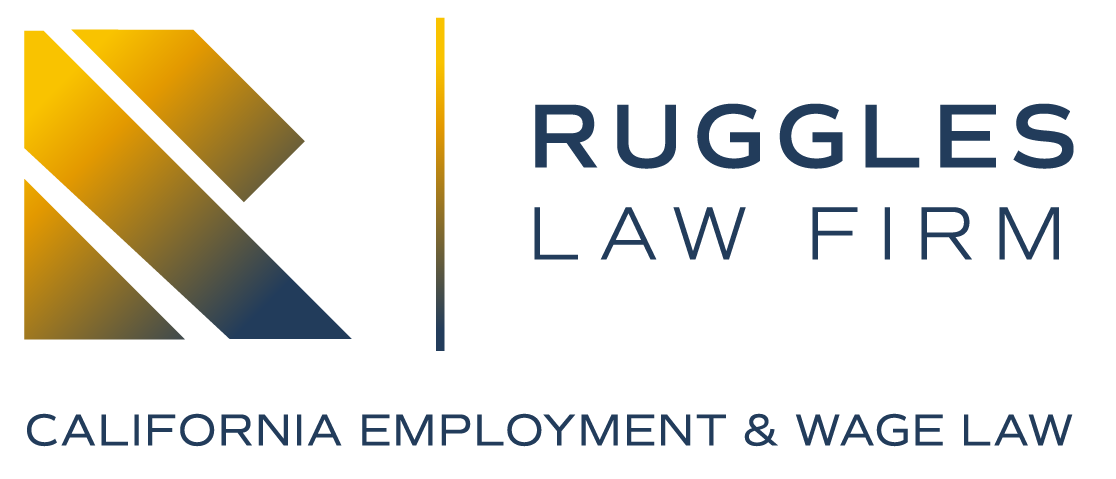Workplace discrimination occurs when an employer treats an employee unfairly based on a legally protected characteristic. In California, the Fair Employment and Housing Act (FEHA) is the primary law that defines and protects employees from unlawful discrimination and harassment. The FEHA applies to private employers with five or more employees, ensuring broad protection across nearly every industry in the state.
Under the FEHA, employers are prohibited from discriminating against employees based on specific protected characteristics. These include race, age, gender, disability, sexual orientation, religion, national origin, marital status, military or veteran status, and several other traits. For an employee to have a valid workplace discrimination claim under FEHA, the mistreatment they experience must be directly linked to one or more of these protected characteristics.
A common misconception is that any form of mistreatment or unfair treatment at work automatically qualifies as workplace discrimination. While employees may feel targeted, excluded, or treated unfairly for various reasons, the FEHA does not cover workplace bullying, general mistreatment, or favoritism unless those actions are rooted in a protected characteristic.
Workplace discrimination isn’t limited to specific job types or sectors — it can affect employees in all industries across California. Whether someone works in tech, retail, healthcare, hospitality, or manufacturing, FEHA’s protections apply equally. Employees may not always recognize when they are experiencing unlawful discrimination, particularly when the mistreatment is subtle or disguised as performance criticism.
Matt Ruggles has decades of employment litigation experience and has represented countless employees in California employment law cases, including those involving workplace discrimination and wrongful termination.
Understanding what qualifies as workplace discrimination — and what does not — is crucial for employees seeking to protect their rights. Common misconceptions about workplace discrimination can prevent employees from recognizing when they have a valid claim. Below are some of the most prevalent myths about workplace discrimination in California — and the facts employees need to know.
Misconception #1: Workplace discrimination only occurs when there is an intentional act of discrimination.
Clarification: Workplace discrimination does not always require intentional misconduct. Under California law, discrimination can occur through both intentional acts and unintentional biases or systemic practices that disproportionately affect certain protected groups. Even if an employer did not deliberately set out to discriminate, their policies, decisions, or workplace practices may still have a discriminatory impact. For example, a company policy that appears neutral — such as requiring employees to work late hours — may unintentionally disadvantage employees with caregiving responsibilities, which could disproportionately affect women. Discrimination can often be identified by examining the impact of workplace actions, not just the employer’s intent.
Misconception #2: Workplace discrimination claims only apply to hiring or firing decisions.
Clarification: Discrimination claims can arise from a broad range of employment actions, not just hiring or firing decisions. Discrimination may occur in areas such as promotions, demotions, pay, benefits, training opportunities, job assignments, and working conditions. It can manifest in subtle yet impactful ways, such as being repeatedly passed over for advancement, denied access to key projects, or excluded from training that could lead to career growth. Employees should be aware that discrimination can affect virtually every stage of employment, not just major employment decisions like hiring or termination.
Misconception #3: Discrimination claims can only be made by minority or historically disadvantaged groups.
Clarification: Workplace discrimination laws protect all employees and job applicants, regardless of their background. Under California’s Fair Employment and Housing Act (FEHA) and federal law, individuals of any race, gender, religion, disability status, or other protected characteristic have the right to assert a discrimination claim if they are treated unfairly based on that characteristic.
Discrimination can occur against anyone, not just members of historically disadvantaged groups. For example, a male employee may have a valid gender discrimination claim if he is treated unfairly because of his gender. Likewise, an employee may have a valid religious discrimination claim if they are treated adversely for not following a particular religious belief or practice. What matters is whether the employer’s decision was substantially motivated by a protected characteristic — not the employee’s demographic background.
Misconception #4: Discrimination claims require direct evidence.
Clarification: Discrimination claims can be proven through direct or indirect evidence. While direct evidence — such as explicit statements or clear proof of discriminatory intent — can strengthen a claim, it is not required. Many valid discrimination claims rely on indirect evidence (also known as circumstantial evidence). This may include patterns of behavior, statistical disparities, or inconsistent explanations for employment decisions. For example, if an employer routinely promotes younger employees over older, more qualified candidates, this pattern may suggest discriminatory intent even without explicit remarks. Both types of evidence are recognized under California law when establishing a discrimination claim.
Misconception #5: Only severe or obvious instances of discrimination are actionable.
Clarification: Discrimination claims are not limited to extreme or blatant acts of unfair treatment. Even subtle, indirect, or less obvious forms of discrimination can be actionable under California law. Discrimination may occur through biased decision-making, exclusion from key projects, or being held to different standards than coworkers — all of which may be less overt but still harmful. Any unfair treatment based on a protected characteristic that negatively impacts an employee’s job, such as their pay, opportunities for advancement, or work environment, can potentially support a valid discrimination claim.
Misconception #6: Reporting workplace discrimination will result in retaliation and negative consequences.
Clarification: Employees are protected from retaliation for reporting, opposing, or participating in investigations related to workplace discrimination. Retaliation is unlawful and can form the basis for a separate legal claim, even if the original discrimination complaint is ultimately unproven. Employers are legally required to maintain a work environment where employees can assert their rights without fear of punishment, such as termination, demotion, harassment, or other adverse actions. Ensuring a safe, supportive, and non-retaliatory environment is essential for protecting employee rights.
Misconception #7: Workplace discrimination claims are not worth pursuing because the process is complicated and time-consuming.
Clarification: Although discrimination claims can involve a complex legal process, California employment laws provide strong protections and clear avenues for employees seeking justice. With the guidance of an experienced employment attorney, individuals can better understand their rights, assess the strength of their claim, and navigate the process effectively. An attorney can help streamline the steps involved, gather necessary evidence, and advocate for appropriate remedies, such as reinstatement, back pay, or compensation for emotional distress. Pursuing a valid discrimination claim can not only provide justice for the employee but also hold employers accountable and promote fair treatment in the workplace.
FREQUENTLY ASKED QUESTIONS ABOUT WORKPLACE DISCRIMINATION
What is the difference between workplace discrimination and harassment?
While both are unlawful under California law, discrimination involves unfair treatment based on a protected characteristic that affects employment decisions (e.g., hiring, firing, or promotions). Harassment, on the other hand, refers to unwelcome conduct that creates a hostile work environment, such as offensive jokes, slurs, or inappropriate behavior. Both may violate the Fair Employment and Housing Act (FEHA).
Can independent contractors file a workplace discrimination claim?
Generally, FEHA protections apply to employees rather than independent contractors. However, California law does provide some protections for contractors in cases of harassment, retaliation, or discriminatory refusal to contract based on a protected characteristic. Determining employment status is crucial in evaluating your legal rights.
What should I do if I suspect workplace discrimination but lack clear evidence?
If you suspect discrimination but don’t have concrete proof, start by documenting incidents, including dates, times, and details of what occurred. Gather relevant communications, such as emails or performance reviews. Consulting with an experienced employment attorney can help assess whether you have a valid claim based on patterns of behavior, inconsistent explanations, or circumstantial evidence.
Are job applicants protected from workplace discrimination in California?
Yes. FEHA protects both employees and job applicants from discrimination. Employers cannot refuse to hire or make hiring decisions based on a protected characteristic such as race, gender, or disability. This protection extends to job postings, interviews, and background checks.
Can workplace discrimination occur after I leave my job?
Yes. In some cases, discrimination-related actions may occur after employment ends. For example, if an employer provides false or negative references based on a protected characteristic, it may constitute unlawful discrimination. Former employees still have legal rights in such situations.
How long do I have to file a workplace discrimination claim in California?
In most cases, employees must file a discrimination complaint with the California Civil Rights Department (CRD) within three years of the alleged discriminatory act. This deadline is crucial, so it’s important to act promptly if you believe you have been discriminated against.
Contact the Ruggles Law Firm to Evaluate Your Potential Lawsuit
If you believe you have been subjected to workplace discrimination, it is crucial to seek legal guidance promptly. Contact the Ruggles Law Firm at 916-758-8058 for a free, no-obligation consultation to discuss your situation and explore your legal options.
Matt Ruggles has extensive knowledge of California employment laws and decades of practical experience litigating employment law claims in California state and federal courts. Using his expertise, Matt and his team can quickly evaluate your potential claim and provide realistic advice on what you can expect if you decide to pursue legal action.
Contact the Ruggles Law Firm at 916-758-8058 for a free consultation today.
Blog posts are not legal advice and are for informational purposes only. Contact the Ruggles Law Firm for consideration of your individual circumstances.




